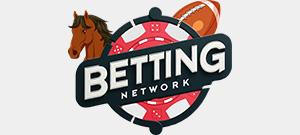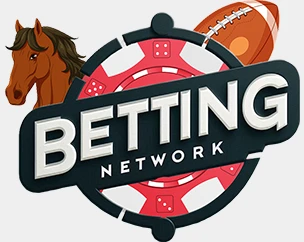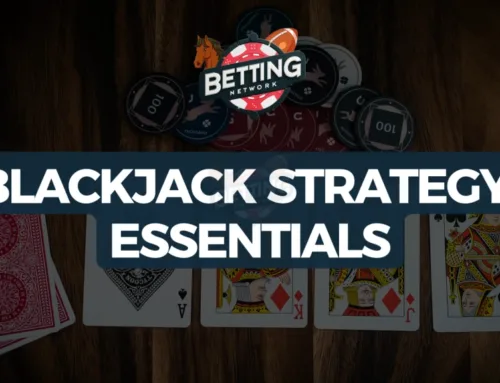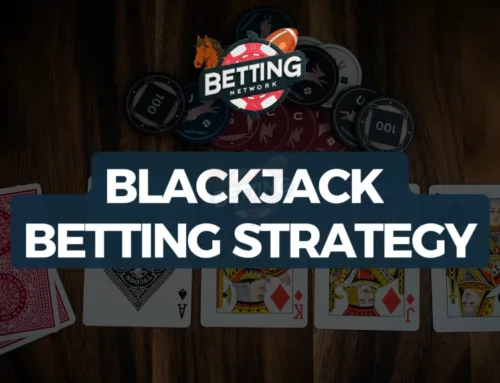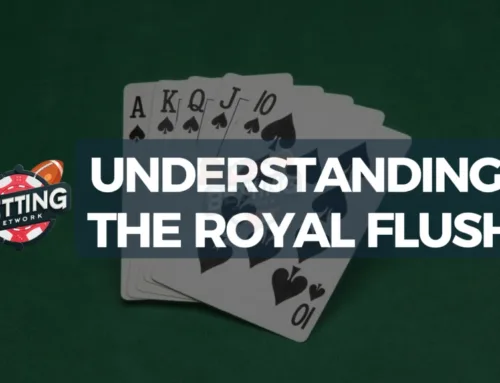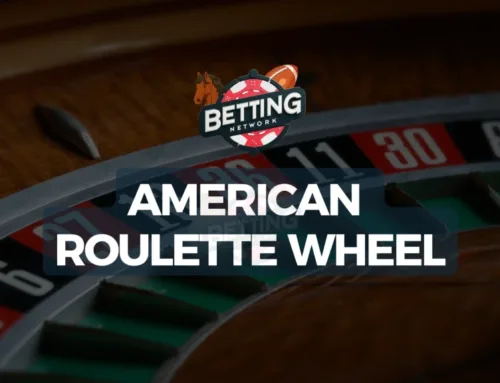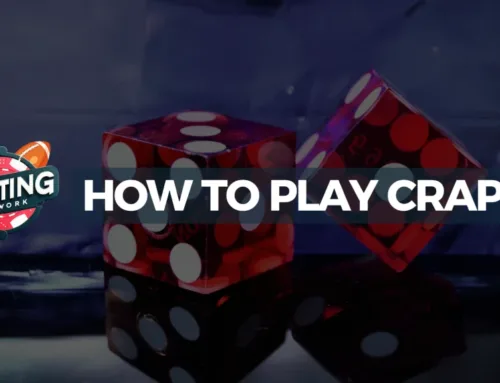Mastering When to Hit on Blackjack to get your hand as close to 21 as possible and avoiding busts is, ultimately, what the game is all about. After all, Blackjack is much more than a game of chance: skill, knowledge and strategy all play a major role in outsmarting the house and inclining the odds in your favor.
To hit or to stand, that is the question. Here are all the answers!
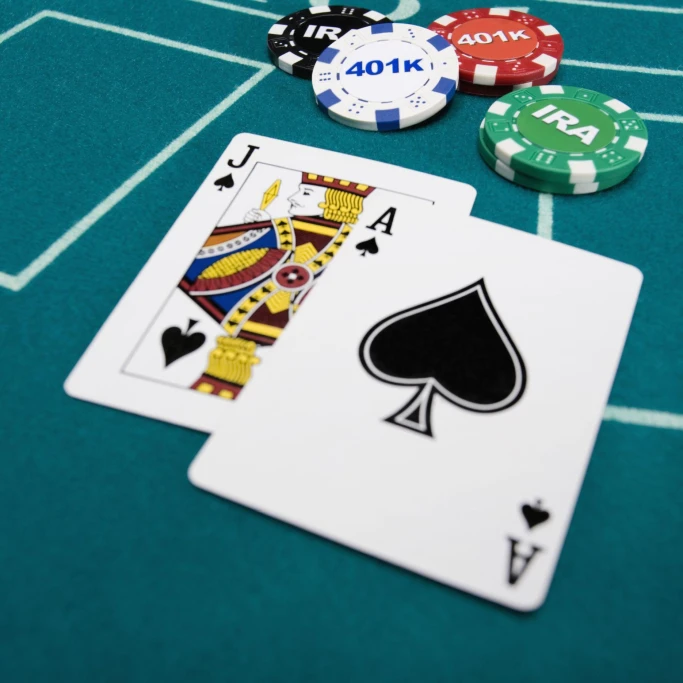
When to Hit on Blackjack: The Basics
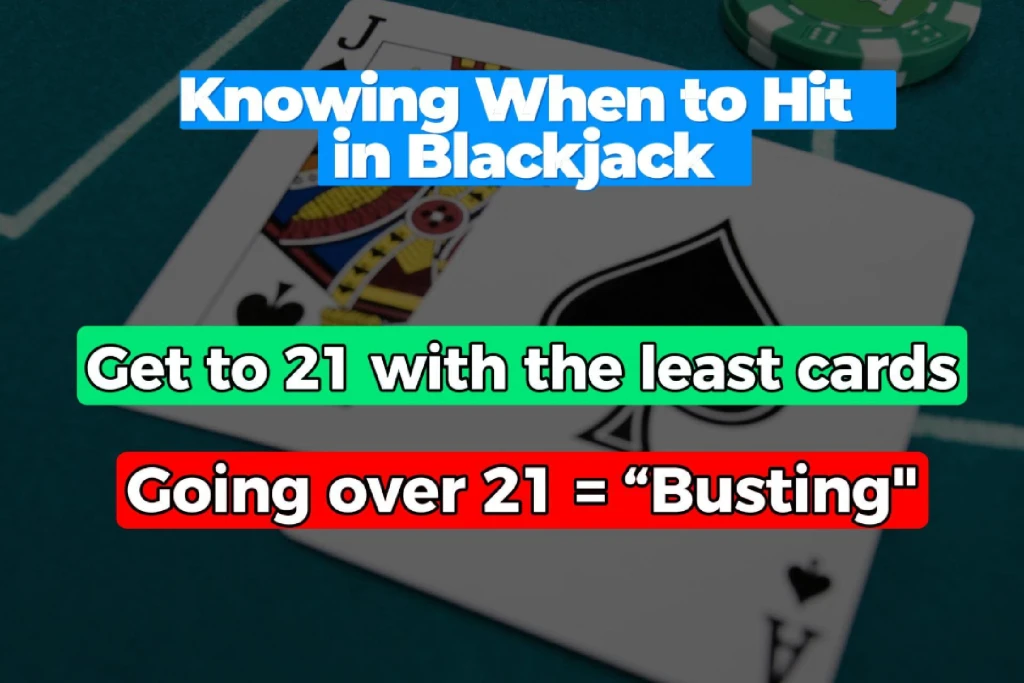
Blackjack is all about getting to the magic number 21 with as fewer cards as possible. Going over 21 is also known as “busting”, and it automatically causes you to lose.
First, we need to know what kind of hand we’re working with. Namely, what soft and hard hands are, and what to do with them.
Let’s start with a typical soft hand scenario
Strategies for Soft and Hard Hands in Blackjack
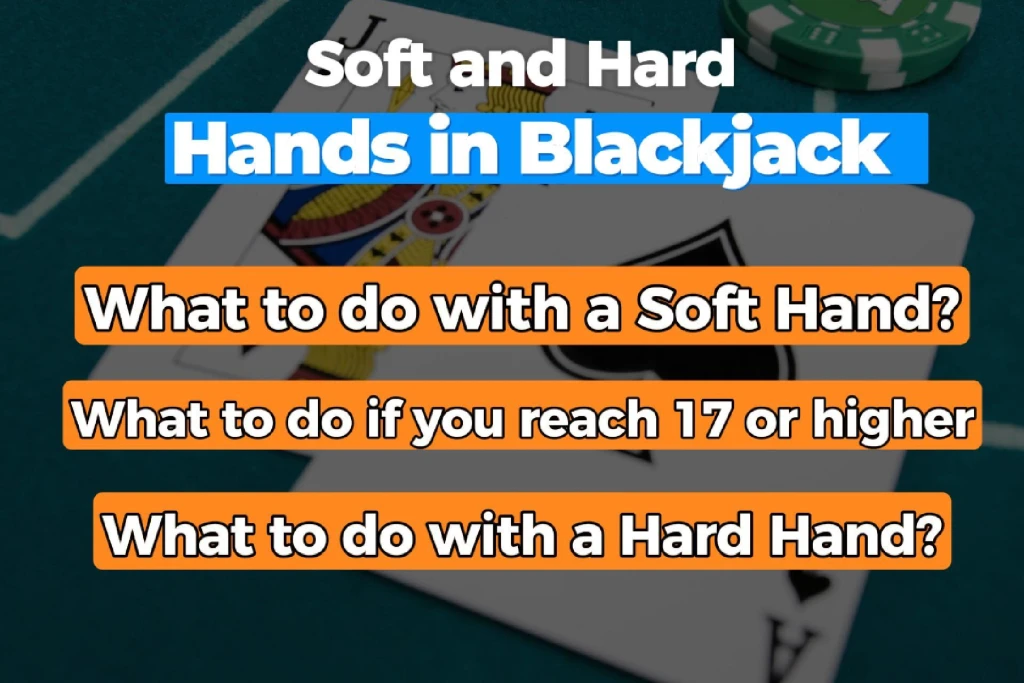
Additional Hitting Strategies in Blackjack
This is a general guideline for beginners. You’ll notice that the game offers a lot of nuances, and if you’re counting cards, then the decision will become more obvious. Keep in mind that for most online games, this won’t be a realistic option though.
Here are some additional factors that you’ll want to consider:
Single vs Multiple Deck Games
If you count cards, you’ll want to look for single-deck games, because they’re significantly easier to count. This translates into more predictable outcomes, allowing you to dodge unwinnable hands and capitalizing big on your strong hands.
If you’re keeping track of the cards, you might find moments to hit where basic strategy would typically recommend standing, depending on the current card count.
Multiple-deck games are notoriously more complex, depending on the number of decks at play. So you’ll need to adjust accordingly.
Card Counting: Enhancing Your Blackjack Strategy
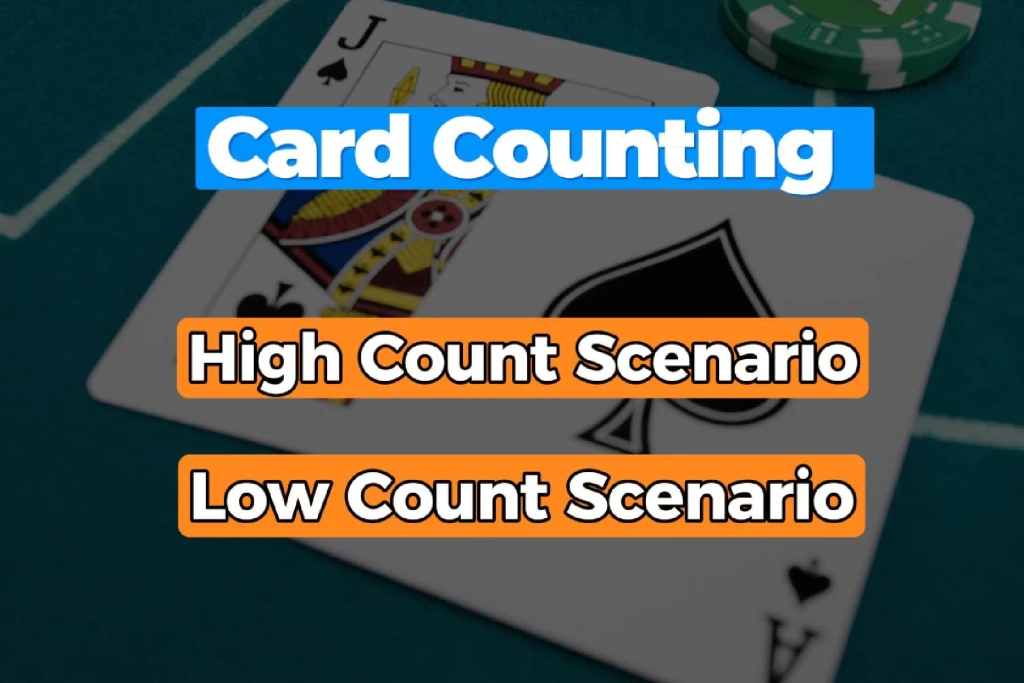
Card counting is, hands down, a thing left for seasoned blackjack players. It offers a tremendous edge over the house (mainly in single-deck games), but it requires a quick mind and a lot of practice.
As the name implies, card counting tracks the ratio of high to low cards remaining in the deck.
A high count (an abundance of high cards left) indicates more favorable conditions for the player, enhancing the likelihood of hitting high-value cards.
- With a high count, you might find it safer to stand on lower totals, betting on the chance that the dealer will bust.
- On the other hand, a low count (more low cards remaining) might prompt you to hit on totals higher than you typically would, aiming to reach a stronger hand.
Card counting allows you to deviate from the general guidelines we offered earlier. You might want to hit even if you have a hard 17, if you’re aware that there’s a low count that could net you a 21. Alternatively, you might want to stand and bait the house into busting if there’s a high count.
You’ll still need to evaluate your hand and the dealer’s hand, but you’ll have an extra piece of information that can turn the tide in your favor.
Debunking Common Blackjack Myths
Here are some of the more common strategic myths that can ruin your online blackjack session:
Myth: You should always assume the dealer’s hole card is a 10.
- Fact: This is a terrible idea, because it’s more effective to base your moves on the dealer’s visible card and your own cards.
Myth #2: Stand on a soft 17
- Fact: 17 might seem solid, but hitting is usually the smarter choice here.
Myth #3: Trust your hunch, nobody has time for maths.
- Fact: Follow mathematically grounded strategies in blackjack. Even these general guidelines are better than your “hunches”. Blackjack is a numbers game, and if you keep betting, you’ll notice that well-established blackjack strategies will score more wins in the long run.
Wrapping Up: Mastering the Art of Hitting in Blackjack
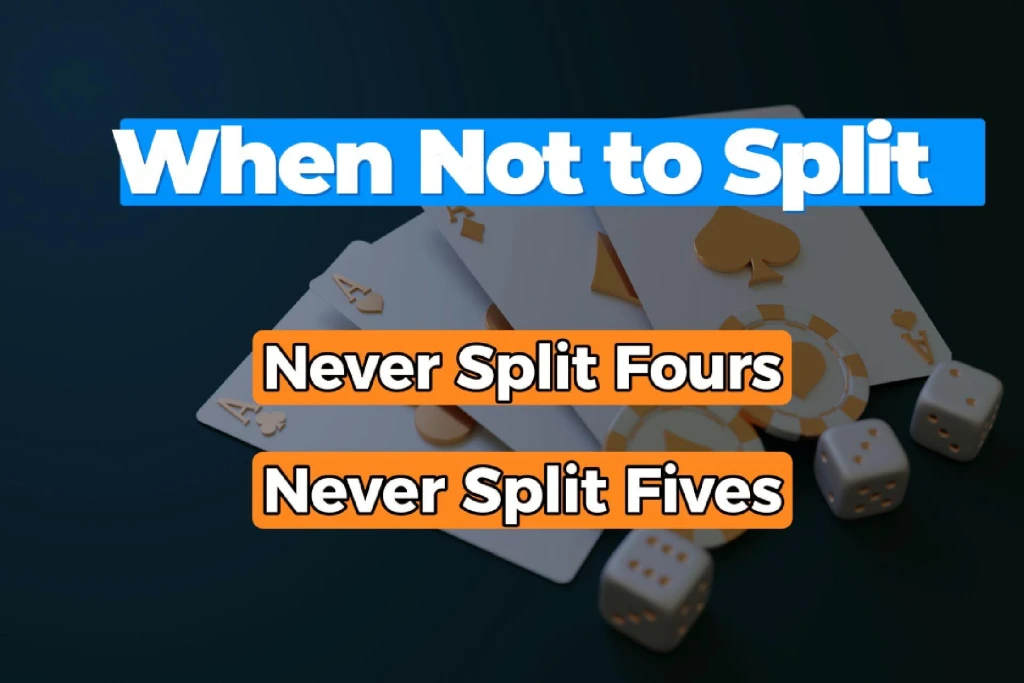
FAQs on Hitting in Blackjack
When should you always hit?
Always hit when your hand total is 11 or less—you cannot bust.
What do you do if you have a soft hand?
Hit on soft 17 or lower. Stand on soft 18 unless the dealer shows a 9, 10, or Ace.
Is it ever advisable to hit on 18?
It’s advisable to hit on soft 18 if the dealer’s card is 9, 10, or an Ace. For hard 18, it’s safer to stand.
Mastering When to Hit on Blackjack to get your hand as close to 21 as possible and avoiding busts is, ultimately, what the game is all about. After all, Blackjack is much more than a game of chance: skill, knowledge and strategy all play a major role in outsmarting the house and inclining the odds in your favor.
To hit or to stand, that is the question. Here are all the answers!

When to Hit on Blackjack: The Basics

Blackjack is all about getting to the magic number 21 with as fewer cards as possible. Going over 21 is also known as “busting”, and it automatically causes you to lose.
First, we need to know what kind of hand we’re working with. Namely, what soft and hard hands are, and what to do with them.
Let’s start with a typical soft hand scenario
Strategies for Soft and Hard Hands in Blackjack

Additional Hitting Strategies in Blackjack
This is a general guideline for beginners. You’ll notice that the game offers a lot of nuances, and if you’re counting cards, then the decision will become more obvious. Keep in mind that for most online games, this won’t be a realistic option though.
Here are some additional factors that you’ll want to consider:
Single vs Multiple Deck Games
If you count cards, you’ll want to look for single-deck games, because they’re significantly easier to count. This translates into more predictable outcomes, allowing you to dodge unwinnable hands and capitalizing big on your strong hands.
If you’re keeping track of the cards, you might find moments to hit where basic strategy would typically recommend standing, depending on the current card count.
Multiple-deck games are notoriously more complex, depending on the number of decks at play. So you’ll need to adjust accordingly.
Card Counting: Enhancing Your Blackjack Strategy

Card counting is, hands down, a thing left for seasoned blackjack players. It offers a tremendous edge over the house (mainly in single-deck games), but it requires a quick mind and a lot of practice.
As the name implies, card counting tracks the ratio of high to low cards remaining in the deck.
A high count (an abundance of high cards left) indicates more favorable conditions for the player, enhancing the likelihood of hitting high-value cards.
- With a high count, you might find it safer to stand on lower totals, betting on the chance that the dealer will bust.
- On the other hand, a low count (more low cards remaining) might prompt you to hit on totals higher than you typically would, aiming to reach a stronger hand.
Card counting allows you to deviate from the general guidelines we offered earlier. You might want to hit even if you have a hard 17, if you’re aware that there’s a low count that could net you a 21. Alternatively, you might want to stand and bait the house into busting if there’s a high count.
You’ll still need to evaluate your hand and the dealer’s hand, but you’ll have an extra piece of information that can turn the tide in your favor.
Debunking Common Blackjack Myths
Here are some of the more common strategic myths that can ruin your online blackjack session:
Myth: You should always assume the dealer’s hole card is a 10.
- Fact: This is a terrible idea, because it’s more effective to base your moves on the dealer’s visible card and your own cards.
Myth #2: Stand on a soft 17
- Fact: 17 might seem solid, but hitting is usually the smarter choice here.
Myth #3: Trust your hunch, nobody has time for maths.
- Fact: Follow mathematically grounded strategies in blackjack. Even these general guidelines are better than your “hunches”. Blackjack is a numbers game, and if you keep betting, you’ll notice that well-established blackjack strategies will score more wins in the long run.
Wrapping Up: Mastering the Art of Hitting in Blackjack

FAQs on Hitting in Blackjack
When should you always hit?
Always hit when your hand total is 11 or less—you cannot bust.
What do you do if you have a soft hand?
Hit on soft 17 or lower. Stand on soft 18 unless the dealer shows a 9, 10, or Ace.
Is it ever advisable to hit on 18?
It’s advisable to hit on soft 18 if the dealer’s card is 9, 10, or an Ace. For hard 18, it’s safer to stand.
Mastering When to Hit on Blackjack to get your hand as close to 21 as possible and avoiding busts is, ultimately, what the game is all about. After all, Blackjack is much more than a game of chance: skill, knowledge and strategy all play a major role in outsmarting the house and inclining the odds in your favor.
To hit or to stand, that is the question. Here are all the answers!

When to Hit on Blackjack: The Basics

Blackjack is all about getting to the magic number 21 with as fewer cards as possible. Going over 21 is also known as “busting”, and it automatically causes you to lose.
First, we need to know what kind of hand we’re working with. Namely, what soft and hard hands are, and what to do with them.
Let’s start with a typical soft hand scenario
Strategies for Soft and Hard Hands in Blackjack

Additional Hitting Strategies in Blackjack
This is a general guideline for beginners. You’ll notice that the game offers a lot of nuances, and if you’re counting cards, then the decision will become more obvious. Keep in mind that for most online games, this won’t be a realistic option though.
Here are some additional factors that you’ll want to consider:
Single vs Multiple Deck Games
If you count cards, you’ll want to look for single-deck games, because they’re significantly easier to count. This translates into more predictable outcomes, allowing you to dodge unwinnable hands and capitalizing big on your strong hands.
If you’re keeping track of the cards, you might find moments to hit where basic strategy would typically recommend standing, depending on the current card count.
Multiple-deck games are notoriously more complex, depending on the number of decks at play. So you’ll need to adjust accordingly.
Card Counting: Enhancing Your Blackjack Strategy

Card counting is, hands down, a thing left for seasoned blackjack players. It offers a tremendous edge over the house (mainly in single-deck games), but it requires a quick mind and a lot of practice.
As the name implies, card counting tracks the ratio of high to low cards remaining in the deck.
A high count (an abundance of high cards left) indicates more favorable conditions for the player, enhancing the likelihood of hitting high-value cards.
- With a high count, you might find it safer to stand on lower totals, betting on the chance that the dealer will bust.
- On the other hand, a low count (more low cards remaining) might prompt you to hit on totals higher than you typically would, aiming to reach a stronger hand.
Card counting allows you to deviate from the general guidelines we offered earlier. You might want to hit even if you have a hard 17, if you’re aware that there’s a low count that could net you a 21. Alternatively, you might want to stand and bait the house into busting if there’s a high count.
You’ll still need to evaluate your hand and the dealer’s hand, but you’ll have an extra piece of information that can turn the tide in your favor.
Debunking Common Blackjack Myths
Here are some of the more common strategic myths that can ruin your online blackjack session:
Myth: You should always assume the dealer’s hole card is a 10.
- Fact: This is a terrible idea, because it’s more effective to base your moves on the dealer’s visible card and your own cards.
Myth #2: Stand on a soft 17
- Fact: 17 might seem solid, but hitting is usually the smarter choice here.
Myth #3: Trust your hunch, nobody has time for maths.
- Fact: Follow mathematically grounded strategies in blackjack. Even these general guidelines are better than your “hunches”. Blackjack is a numbers game, and if you keep betting, you’ll notice that well-established blackjack strategies will score more wins in the long run.
Wrapping Up: Mastering the Art of Hitting in Blackjack

FAQs on Hitting in Blackjack
When should you always hit?
Always hit when your hand total is 11 or less—you cannot bust.
What do you do if you have a soft hand?
Hit on soft 17 or lower. Stand on soft 18 unless the dealer shows a 9, 10, or Ace.
Is it ever advisable to hit on 18?
It’s advisable to hit on soft 18 if the dealer’s card is 9, 10, or an Ace. For hard 18, it’s safer to stand.
Mastering When to Hit on Blackjack to get your hand as close to 21 as possible and avoiding busts is, ultimately, what the game is all about. After all, Blackjack is much more than a game of chance: skill, knowledge and strategy all play a major role in outsmarting the house and inclining the odds in your favor.
To hit or to stand, that is the question. Here are all the answers!

When to Hit on Blackjack: The Basics

Blackjack is all about getting to the magic number 21 with as fewer cards as possible. Going over 21 is also known as “busting”, and it automatically causes you to lose.
First, we need to know what kind of hand we’re working with. Namely, what soft and hard hands are, and what to do with them.
Let’s start with a typical soft hand scenario
Strategies for Soft and Hard Hands in Blackjack

Additional Hitting Strategies in Blackjack
This is a general guideline for beginners. You’ll notice that the game offers a lot of nuances, and if you’re counting cards, then the decision will become more obvious. Keep in mind that for most online games, this won’t be a realistic option though.
Here are some additional factors that you’ll want to consider:
Single vs Multiple Deck Games
If you count cards, you’ll want to look for single-deck games, because they’re significantly easier to count. This translates into more predictable outcomes, allowing you to dodge unwinnable hands and capitalizing big on your strong hands.
If you’re keeping track of the cards, you might find moments to hit where basic strategy would typically recommend standing, depending on the current card count.
Multiple-deck games are notoriously more complex, depending on the number of decks at play. So you’ll need to adjust accordingly.
Card Counting: Enhancing Your Blackjack Strategy

Card counting is, hands down, a thing left for seasoned blackjack players. It offers a tremendous edge over the house (mainly in single-deck games), but it requires a quick mind and a lot of practice.
As the name implies, card counting tracks the ratio of high to low cards remaining in the deck.
A high count (an abundance of high cards left) indicates more favorable conditions for the player, enhancing the likelihood of hitting high-value cards.
- With a high count, you might find it safer to stand on lower totals, betting on the chance that the dealer will bust.
- On the other hand, a low count (more low cards remaining) might prompt you to hit on totals higher than you typically would, aiming to reach a stronger hand.
Card counting allows you to deviate from the general guidelines we offered earlier. You might want to hit even if you have a hard 17, if you’re aware that there’s a low count that could net you a 21. Alternatively, you might want to stand and bait the house into busting if there’s a high count.
You’ll still need to evaluate your hand and the dealer’s hand, but you’ll have an extra piece of information that can turn the tide in your favor.
Debunking Common Blackjack Myths
Here are some of the more common strategic myths that can ruin your online blackjack session:
Myth: You should always assume the dealer’s hole card is a 10.
- Fact: This is a terrible idea, because it’s more effective to base your moves on the dealer’s visible card and your own cards.
Myth #2: Stand on a soft 17
- Fact: 17 might seem solid, but hitting is usually the smarter choice here.
Myth #3: Trust your hunch, nobody has time for maths.
- Fact: Follow mathematically grounded strategies in blackjack. Even these general guidelines are better than your “hunches”. Blackjack is a numbers game, and if you keep betting, you’ll notice that well-established blackjack strategies will score more wins in the long run.
Wrapping Up: Mastering the Art of Hitting in Blackjack

FAQs on Hitting in Blackjack
When should you always hit?
Always hit when your hand total is 11 or less—you cannot bust.
What do you do if you have a soft hand?
Hit on soft 17 or lower. Stand on soft 18 unless the dealer shows a 9, 10, or Ace.
Is it ever advisable to hit on 18?
It’s advisable to hit on soft 18 if the dealer’s card is 9, 10, or an Ace. For hard 18, it’s safer to stand.
